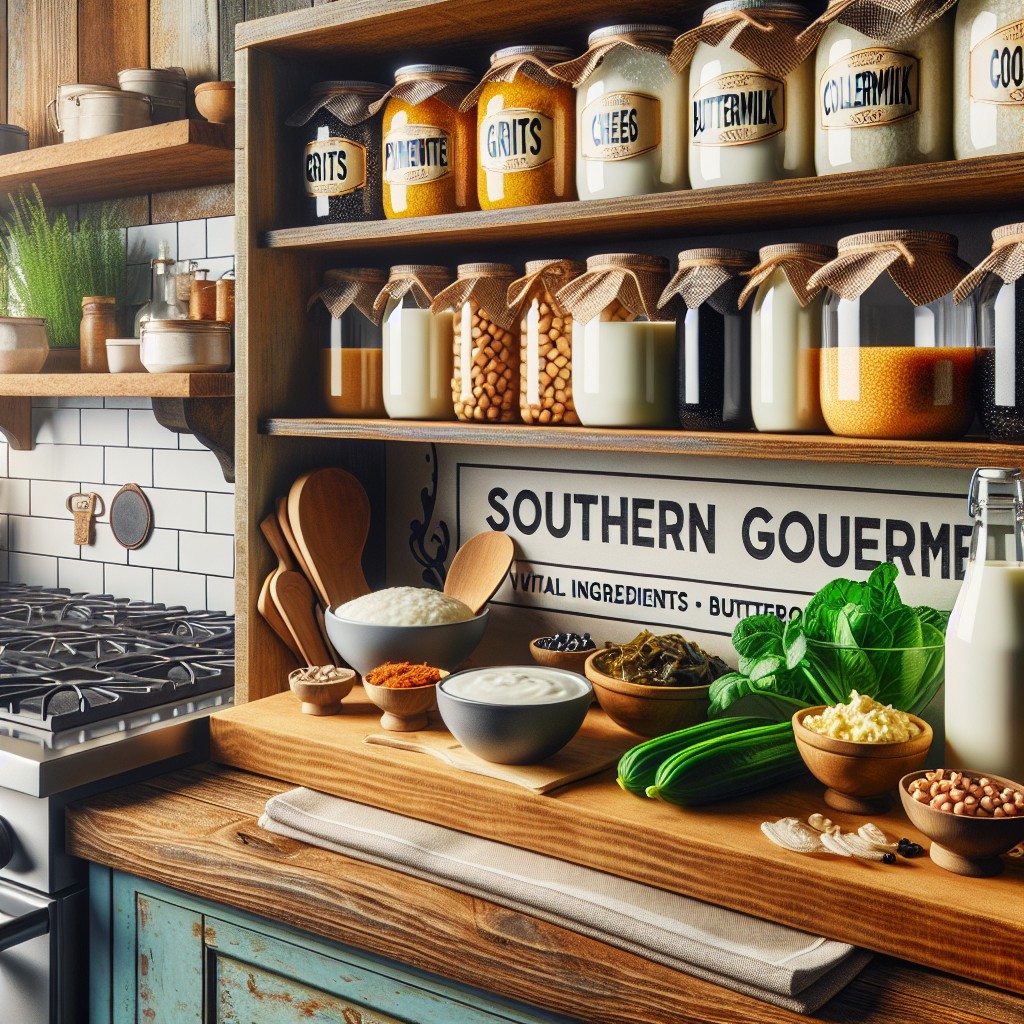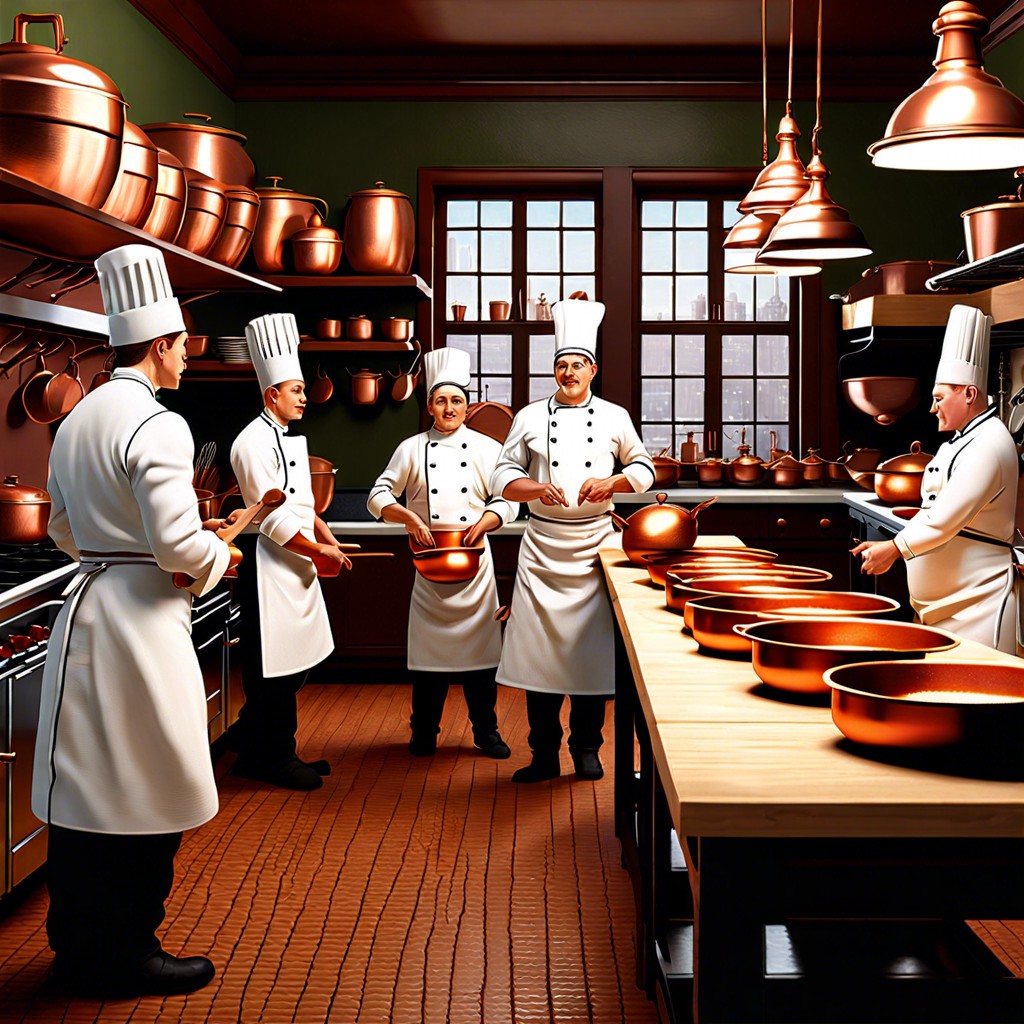Last updated on
Because they masterfully transform octopus into culinary art, Octopus Kitchen has captivated food-lovers, and here’s the inside scoop on why it’s gaining popularity.
Key takeaways:
- Octopus Kitchen combines tradition and innovation in its culinary approach.
- Sustainability and ethical sourcing are prioritized in ingredient selection.
- Octopus Kitchen emphasizes education about octopus biology and culinary uses.
- Essential equipment for cooking octopus includes a large pot and kitchen shears.
- Octopus can be prepared through boiling, grilling, or sous vide cooking methods.
What's Inside
The Concept of an Octopus Kitchen

An octopus kitchen embodies the essence of marine gastronomy, creating a culinary hub focused on the art of preparing and serving octopus. This specialized approach showcases the versatility of the creature, from its tender texture to its unique flavor profile.
- It’s a nod to both tradition and innovation, as chefs draw on classic techniques and modern twists.
- The space is designed to handle octopus-specific equipment, ensuring each dish celebrates the mollusk’s potential.
- Emphasis is placed on sustainability and ethical sourcing to respect the ocean’s resources.
- Its environment often features ocean-themed decor, enhancing the immersion in seafood dining.
- Education is a cornerstone, with staff often sharing insights into octopus biology and culinary uses.
This concept is a testament to the growing desire for focused culinary experiences, where diners can embark on a journey through the tastes and tales of the octopus.
Essential Equipment for Cooking Octopus

Having the right tools can transform your octopus cooking experience. To start, a large pot is crucial for boiling, ensuring there’s enough space for the octopus to be submerged comfortably. If grilling is on the agenda, a well-constructed grill grate allows for an even char without the risk of pieces falling through.
Due to the nature of octopus flesh, a pair of kitchen shears is a must-have for trimming, as it makes cutting through the tough skin and tentacles much easier than a knife. When it comes to tenderizing, a meat mallet can be useful, although traditionally, some prefer massaging it by hand or using the time-honored method of repeatedly dunking the octopus in boiling water.
For precise, low-temperature cooking, a sous vide machine offers unparalleled control, resulting in consistently tender octopus every time. Finally, don’t overlook tongs and a sharp chef’s knife, tools which aid in handling and portioning the cooked cephalopod with ease.
Selecting the Right Octopus: Freshness and Source
When choosing an octopus, consider its origin as sustainability and ethical fishing practices are key.
Seek out vendors who provide transparent sourcing information.
Opt for fresh octopus if available, characterized by a vivid color and a sea-fresh smell.
If the creature is slimy or emits an overly fishy odor, it’s best to steer clear.
For those who rely on frozen octopus, thawing is a delicate process.
Slow defrosting in the refrigerator maintains texture and taste integrity.
Always inquire about previous freezing when buying “fresh” octopus, as it may have been frozen and thawed already, which can impact texture upon re-cooking.
Prepping the Octopus: Cleaning and Tenderizing Techniques
Before diving into the cooking process, prepping your octopus is a step you can’t skip. The aim is to ensure a clean and tender result that’ll turn into a culinary delight.
First, thoroughly rinse the octopus under cold water to remove any debris or residual sand. Pay particular attention to the suction cups, where grit often hides. Next, if your octopus comes with its head still intact, you’ll need to turn it inside out to extract the innards and the beak—located at the center of the tentacle cluster.
Tenderizing is crucial, as octopus is famously muscular and can become quite chewy if not handled correctly. There are a couple of methods you can employ: the traditional method involves a good old hammer or mallet, giving the flesh a thorough pounding. For a more modern approach, freezing the octopus before cooking breaks down muscle fibers, leading to a more tender texture upon thawing.
Another classic tenderizing method is to dip the octopus three times into boiling water before submerging it completely. The shocking from hot to cold water helps to relax the muscles.
After these steps, your octopus will be primed for a delicious transformation in the cooking phase. A tender, flavored-filled plate awaits!
Cooking Methods: Boiling, Grilling, and Sous Vide
Boiling is often the go-to method for its simplicity. Achieve tender outcomes by simmering in lightly salted water for about an hour—timing varies with size. A tip: adding a cork to the pot is a traditional trick believed to soften the flesh.
Grilling imparts a smoky flavor and a delightful char. Marinate briefly, then cook over high heat for a few minutes each side. Remember to oil the grill to prevent sticking and to retain the octopus’ moisture.
Sous vide is the modern approach for precise doneness. Seal the octopus with seasonings in a vacuum bag, then indulge it in a water bath at a controlled temperature, typically 77°C (170°F), for four to five hours. This slow cooking technique ensures an evenly cooked texture throughout.
Signature Octopus Dishes and How to Plate Them
Transforming a simple octopus into a show-stopping dish hinges on both taste and presentation. Classic Mediterranean offerings like ‘Pulpo a la Gallega’ place thinly sliced tentacles atop a smattering of paprika-dusted potatoes, inviting a burst of color and balancing textures.
For those aiming for a more avant-garde presentation, a carpaccio arrangement allows for artistic flair, drizzling vibrant sauces and garnishes like chili oil and microgreens to create an edible canvas.
When plating grilled octopus, contrast is key. A charred tentacle curled atop a puree of white bean or pea not only offers a stunning visual with its deep grill marks but also a pleasing interplay of smoky and smooth flavor profiles. Remember, the tentacle’s natural shape can be your guide to achieving an aesthetically pleasing layout.
Lastly, remember the rule of odd numbers for visual appeal; arrange tentacles or pieces in threes or fives to achieve a plate that’s as delightful to the eyes as it is to the palate.
Pairing Flavors: Complementing Side Dishes
The versatility of octopus makes it a delightful protein to pair with a variety of side dishes. When selecting accompaniments, consider texture and flavor balance to enhance the dining experience.
- Citrusy Quinoa Salad: The light and zesty notes of a citrus-dressed quinoa salad cut through the richness of octopus, refreshing the palate.
- Roasted Vegetables: Heartier sides like roasted root vegetables bring out the natural sweetness in octopus when caramelized.
- Sautéed Greens: Bitter greens like kale or Swiss chard add complexity and contrast, especially when sautéed with garlic.
- Potato Puree: A smooth potato puree serves as a creamy base that complements the chewiness of well-cooked octopus.
- Pasta: Infuse Mediterranean flair by tossing octopus with al dente pasta, good-quality olive oil, and fresh herbs.
Remember, the goal is to select sides that will support, not overshadow, the delicate flavor and texture of octopus.
Octopus Kitchen Etiquette: Do’s and Don’ts
When visiting an octopus kitchen, the delicate flavors and unique textures of the dishes demand a certain respect for the cooking process. Handle the octopus with care to maintain its structure. This starts with gentle cooking to avoid toughness, as overcooking the protein can ruin the experience.
Do:
- Explore different cooking times and temperatures to find the sweet spot that yields a tender and flavorful octopus.
- Use the appropriate tools, such as tongs or a slotted spoon, to handle the octopus gently during cooking and plating.
- Trust the chef’s expertise, especially when it comes to recommended pairings and sauces that highlight the star ingredient’s features.
Don’t:
- Overcrowd the cooking surface, as this can reduce the temperature too much and lead to unevenly cooked octopus.
- Rush the prepping process; thorough cleaning and tenderizing set the stage for culinary success.
- Underestimate the visual aspect of serving octopus. An integral part of kitchen etiquette is the presentation, so aim for an aesthetic plate that complements the taste and quality of the dish.
Menu Planning: Incorporating Octopus Into Various Courses
Octopus is a versatile ingredient that can grace your table in a variety of forms. When planning a menu, consider starting with a light octopus salad, using thinly sliced tentacles atop fresh greens, drizzled with a zesty vinaigrette, perfect for awakening the palate.
Transition to the next course with an octopus carpaccio or ceviche, ideal for showcasing its delicate texture. These dishes can act as a refreshing interlude before the main course.
For the main attraction, grilled octopus legs serve as a hearty entrée, gaining depth of flavor from a smoky char. Pair with a robust sauce and a side of Mediterranean-inspired roasted vegetables, harmonizing with the rich umami of the seafood.
If incorporating pasta, consider a traditional octopus ragu over linguine, combining the savory taste of the sea with the comforting feel of carbs. It’s a satisfying dish that doubles as a warm invitation to dive deeper into the meal.
Finally, for a truly refined addition, small portions of octopus can be included in an amuse-bouche or tapas spread, allowing diners to savor its complexity without overwhelming the senses. The key is balance, allowing each course to highlight a different facet of the octopus’s flavor and texture.
Address and Location: Where to Find an Octopus Kitchen
Discovering your local octopus kitchen involves a bit of research. Start with coastal cities; these hubs often house the freshest seafood markets and restaurants specializing in marine delicacies. For gourmet enthusiasts, big metropolitan areas are hot spots where chefs might flex their culinary muscles with octopus dishes.
Don’t overlook online platforms. Many upscale grocery stores and specialty seafood markets now offer online ordering, complete with delivery options, bringing the ocean’s bounty straight to your door. This route often provides access to a diversity of octopus species, ready for your homemade seafood feast.
Food festivals, often showcasing local and international cuisine, can be golden opportunities to indulge in expertly prepared octopus. Keep an eye on event calendars for such festivals, especially those celebrating seafood or specific cultures known for their octopus cuisine, like Greek or Japanese events.
Lastly, engage with foodie communities on social media, where members are quick to share insider tips on the latest culinary trends and locations. A post asking for recommendations can yield a trove of tried-and-tested octopus kitchens awaiting your visit.
Continue reading:



